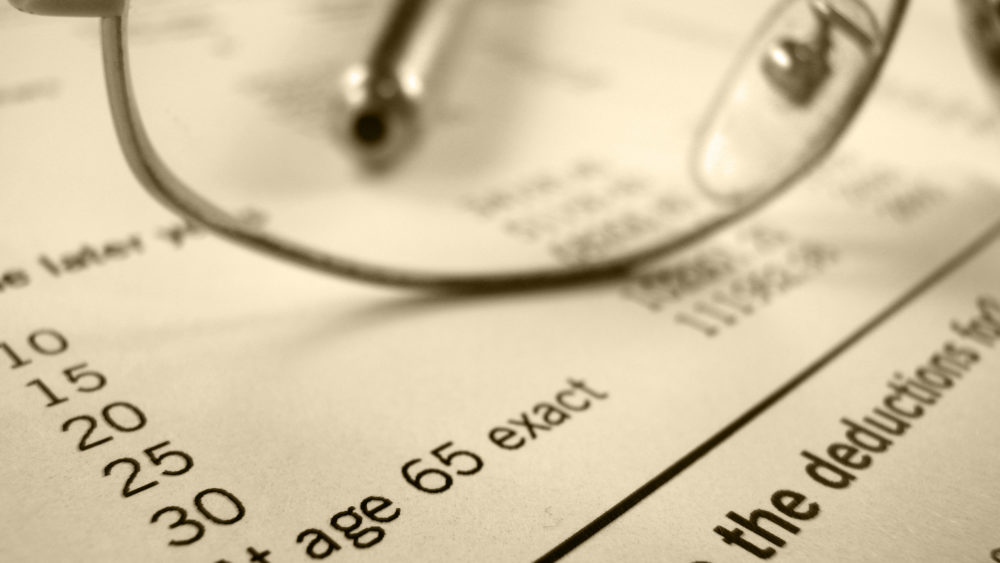The pension Lifetime Allowance limits how much you can have in pension benefits tax-efficiently. While you may think exceeding the allowance is a long way off, you could be closer to the threshold than you think. If you haven’t considered how close you are, you could be liable for much more tax than expected.
What is the Lifetime Allowance?
The Lifetime Allowance is the total amount you can have in pension benefits before you may face additional tax charges.
Crucially, the Lifetime Allowance covers the total amount held in your pension, not just your own contributions. This means employer contributions, tax relief, and investment returns will contribute to the threshold.
For the 2021/22 tax year, the Lifetime Allowance is £1,073,100. As part of the freezes announced in the spring Budget 2021, it will remain at this level until the 2025/26 tax year. The freeze means the allowance won’t increase in line with inflation as it has done in the past. The Treasury is expected to raise £900 million in extra charges as a result of the freeze.
If you have a defined benefit (DB) pension, which provides a guaranteed income from the retirement date for the rest of your life, you will need to calculate the value. This is usually done by multiplying your expected annual retirement income by 20. You will also need to add any separate lump sums you may receive through a pension to this amount.
Could you be closer to the threshold than you think?
When you’re saving into a pension, it’s easy to overlook how much it will add up. Once you start factoring in investment returns and the benefits of compound growth over several decades, you could be much closer to the threshold than you expect.
Even if you stop making contributions, your pension will usually remain invested. So, your pension benefits could continue to grow without further contributions. This can make it difficult to understand if it’s something you should be concerned about.
According to interactive investor’s The Great British Retirement Survey 2021, 21% of workers believe they will be hit with charges for breaching the threshold, and a further 24% are nearing the threshold.
Keeping track of your pension savings and how they’re growing can help you understand if you need to consider the Lifetime Allowance. If you’d like help understanding how your pension could grow for the rest of your career, please contact us.
What happens if you exceed the Lifetime Allowance?
There’s no limit on how much your pension can be worth. However, there are checks carried out at certain points to see if the value of your pension exceeds the Lifetime Allowance. These points are known as “benefit crystallisation events” and include:
- When you start drawing from a DB pension
- When you take an income or lump sum from your DC pension
- If you transfer your pension overseas before the age of 75
- Your 75th birthday if you haven’t accessed your pension.
If you have multiple pensions, each time you access a new pension, it will be checked against previous benefit crystallisation events to see what your remaining Lifetime Allowance is.
The Lifetime Allowance applies at the point your pension is checked. This is why it’s important to consider how your pension benefits will change between now and the above points.
If your pension does exceed the Lifetime Allowance at a benefit crystallisation event, you will need to pay additional tax on the excess savings. The rate of tax will depend on how you access your savings:
- If you take the excess savings as a lump sum, it’s taxed at 55%.
- If you take an income from the excess savings, such as through pension drawdown or by purchasing an annuity, there is an immediate 25% tax charge.
These tax charges are on top of any other Income Tax that may due when accessing your pension.
What should you do if you’re nearing the Lifetime Allowance?
If you’re nearing, or have already exceeded the Lifetime Allowance, don’t immediately stop your pension contributions. Instead, take some time to review your situation.
You should find the current value of your pension, and then calculate how much it could be worth when you retire and draw an income, or at other benefit crystallisation events that could occur first.
There are also two other questions to consider:
- Can you increase your Lifetime Allowance? There are protections that can provide you with a higher Lifetime Allowance. There are currently two protections you may be able to apply for: individual protection 2016 and fixed protection 2016. If you’d like to discuss if these protections are right for you, please contact us.
- Should you continue contributing to your pension? In some cases, remaining part of a pension scheme can still be valuable, even if you could face an additional tax charge. For example, if a DB pension offers a pension for your spouse or dependents if you pass away, this could lapse if you’re no longer a member of the pension scheme.
If you’re worried about the Lifetime Allowance, please contact us. We can help you understand if you’ll face additional charges when you access your pension and what steps you can take to mitigate it.
Please note: This blog is for general information only and does not constitute advice. The information is aimed at retail clients only.
A pension is a long-term investment not normally accessible until 55 (57 from April 2028). The value of your investments (and any income from them) can go down as well as up, which would have an impact on the level of pension benefits available.
Your pension income could also be affected by the interest rates at the time you take your benefits. The tax implications of pension withdrawals will be based on your individual circumstances. Levels, bases of and reliefs from taxation may change in subsequent Finance Acts.


